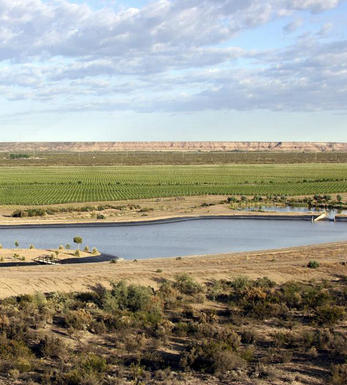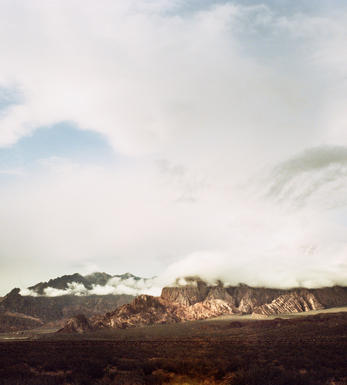
2015 Bodega del Desierto, Desierto 25 Pinot Noir, Patagonia, Argentina

About this WINE

Bodega del Desierto
Bodega del Desierto (winery of the desert) is located in the Patagonian desert in a town called ‘25 de Mayo’ (hence the reference to 25 in their wine names). It is a long, long way from any other wineries in the region of La Pampa. Here, the extreme climate and strong winds result in distinctive and elegant wines.
Patagonia has a very old, yet little known, viticultural tradition. It was one of the first locations selected in Argentina by the pioneers and immigrants on the XIX century, due to excellent conditions to produce high quality grapes for wine production. The later boom of local mass wine consumption (that reached its peak with 90 litres per capita in 1970) encouraged producers to move into northern locations with higher yield production and better transportation facilities (railroad to Buenos Aires, the main area of consumption). The viticultural potential of Patagonia was therefore kept almost unexploited for many years, till the Argentine reconversion to high quality wines in the eighties and nineties.
It was in 2000 that Armando and Maria Loson, brother and sister from an Argentine family, had the chance to lead a family project on the High Valley of the Colorado River area, north of Patagonia - south of La Pampa province. After a thorough study of the soil and weather that determined the suitability to produce high quality grapes, they decided to plant the vineyard. At first, the project was to sell the grapes to other wineries but after the impressive results of the first harvest they took the chance to produce under their own brands.
The soil is sandy and deep with variable content of stones. Its low organic matter content leads to restricted vine growth and to the natural development of premium grapes. The main characteristic is the mineral component that is noticeable in all Bodega del Desierto’s wines. The vine structure was designed by Mario Toso on trellis, with a double-cordon training system and a density of 3,500 plants per hectare using all drip irrigation with pure and clean melt water from the Andean Mountains, taken from the Colorado River. Irrigation is essential as the average annual rainfall here is only 200mm. The winemaker is Sebastian Cavagnaro and the consultant agronomist is Enzo Mugnani. Ex-Robert Mondavi/Opus One superstar consultant winemaker, Paul Hobbs (twice named Wine Personality of the Year by Robert Parker), has been working with the vineyard and the wines since 2003.
The geographic and climatic characteristics, with less than seven inches of rainfall a year, gave birth to the name Bodega del Desierto. Two of the most representative pictures of the soil inspired the design pattern for the labels. The virgin land where the vineyard was planted is still surrounded by 160 km of desert, ensuring a natural sanitation buffer and also maintaining the integrity of the ecosystem. In addition, the vineyard is located at the western end of the route 20 that connects Buenos Aires to Patagonia, well known as ‘ruta del desierto’ because of its isolated and long straight road with hardly anything from beginning to end.

La Pampa Patagonia
Patagonia is Chile's and the world’s southernmost winegrowing region. It is primarily a desert and viticulture is only possible here thanks to irrigation using the a pure melt water from the Andes. There are three winegrowing provinces: Rio Negro is the most established, followed by Neuquén and, more recently, La Pampa.
Patagonia has a very old, yet little known, viticultural tradition. It was one of the first locations selected in Argentina by the pioneers and immigrants on the XIX century, due to excellent conditions to produce high quality grapes for wine production. The later boom of local mass wine consumption (that reached its peak with 90 litres per capita in 1970) encouraged producers to move into northern locations with higher yield production and better transportation facilities (railroad to Buenos Aires, the main area of consumption). The viticultural potential of Patagonia was therefore kept almost unexploited for many years, till the Argentine reconversion to high quality wines in the eighties and nineties.
The warm days and cold nights, thanks to the desert conditions (and altitudes of 1,300ft to 1,500ft in Rio Negro and Neuquén) results in an extended growing season, allowing the grapes to become fully ripe whilst retaining refreshing acidity and varietal character. The newest province, La Pampa, is a gentle desert plain with narrow, fan-shaped valleys between 130ft to 330ft above sea level. Irrigation is essential with only 150mm to 200mm rainfall per year.
The resultant wines are light and elegant - a far cry stylistically from their Mendoza counterparts. Pinot Noir is particularly successful but refreshing, fragrant Malbec, Syrah and Bordeaux varieties have great appeal, as well as pure, mineral Sauvignon Blanc, Chardonnay and Riesling.

Pinot Noir
Pinot Noir is probably the most frustrating, and at times infuriating, wine grape in the world. However when it is successful, it can produce some of the most sublime wines known to man. This thin-skinned grape which grows in small, tight bunches performs well on well-drained, deepish limestone based subsoils as are found on Burgundy's Côte d'Or.
Pinot Noir is more susceptible than other varieties to over cropping - concentration and varietal character disappear rapidly if yields are excessive and yields as little as 25hl/ha are the norm for some climats of the Côte d`Or.
Because of the thinness of the skins, Pinot Noir wines are lighter in colour, body and tannins. However the best wines have grip, complexity and an intensity of fruit seldom found in wine from other grapes. Young Pinot Noir can smell almost sweet, redolent with freshly crushed raspberries, cherries and redcurrants. When mature, the best wines develop a sensuous, silky mouth feel with the fruit flavours deepening and gamey "sous-bois" nuances emerging.
The best examples are still found in Burgundy, although Pinot Noir`s key role in Champagne should not be forgotten. It is grown throughout the world with notable success in the Carneros and Russian River Valley districts of California, and the Martinborough and Central Otago regions of New Zealand.


Buying options
Add to wishlist
Description
With a climate that winemaker Paul Hobbs describes as “like a blast furnace” with “frost, heat and driving winds”, it may stretch credulity to assert that it is not only possible to produce wine in the Patagonian desert, but also that it is actually incredibly good. Despite the extremes of temperature, there are huge benefits that come with such a hostile environment – namely the absence of any disease or pest to trouble the vines.
This Patagonian Pinot Noir has an immediately savoury, bacon fat note to the nose – a far cry from the tinned cherry style of Pinot Noir that is much more typical of South America. This is restrained, with a stalky, herbaceous note to the nose and an elegant seam of fresh red cherry fruit running through its core. This is an elegant and very different interpretation of New World Pinot Noir. It is quite fascinating.
wine at a glance
Delivery and quality guarantee